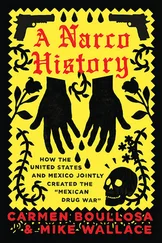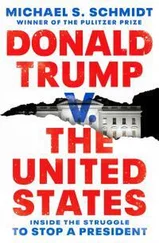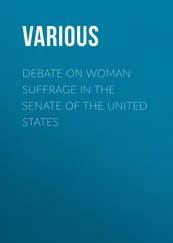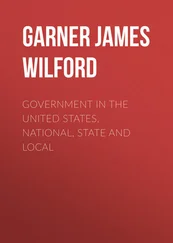Jeffrey Lewis - The 2020 Commission Report on the North Korean Nuclear Attacks Against the United States
Здесь есть возможность читать онлайн «Jeffrey Lewis - The 2020 Commission Report on the North Korean Nuclear Attacks Against the United States» весь текст электронной книги совершенно бесплатно (целиком полную версию без сокращений). В некоторых случаях можно слушать аудио, скачать через торрент в формате fb2 и присутствует краткое содержание. Город: New York, Год выпуска: 2018, ISBN: 2018, Издательство: Mariner Books, Жанр: Фантастика и фэнтези, Триллер, на английском языке. Описание произведения, (предисловие) а так же отзывы посетителей доступны на портале библиотеки ЛибКат.
- Название:The 2020 Commission Report on the North Korean Nuclear Attacks Against the United States
- Автор:
- Издательство:Mariner Books
- Жанр:
- Год:2018
- Город:New York
- ISBN:9-781-328-57391-9
- Рейтинг книги:4 / 5. Голосов: 1
-
Избранное:Добавить в избранное
- Отзывы:
-
Ваша оценка:
- 80
- 1
- 2
- 3
- 4
- 5
The 2020 Commission Report on the North Korean Nuclear Attacks Against the United States: краткое содержание, описание и аннотация
Предлагаем к чтению аннотацию, описание, краткое содержание или предисловие (зависит от того, что написал сам автор книги «The 2020 Commission Report on the North Korean Nuclear Attacks Against the United States»). Если вы не нашли необходимую информацию о книге — напишите в комментариях, мы постараемся отыскать её.
The 2020 Commission Report on the North Korean Nuclear Attacks Against the United States — читать онлайн бесплатно полную книгу (весь текст) целиком
Ниже представлен текст книги, разбитый по страницам. Система сохранения места последней прочитанной страницы, позволяет с удобством читать онлайн бесплатно книгу «The 2020 Commission Report on the North Korean Nuclear Attacks Against the United States», без необходимости каждый раз заново искать на чём Вы остановились. Поставьте закладку, и сможете в любой момент перейти на страницу, на которой закончили чтение.
Интервал:
Закладка:
With the reestablishment of communications, however, the scope of North Korea’s nuclear attack was now clear and President Trump’s anxiety about his family was growing. He was increasingly insistent that staff put him in contact with members of his family, particularly his wife Melania and his daughter Ivanka. Ivanka and her husband Jared Kushner had been in Washington. The Secret Service had whisked them to safety at the White House and escorted them down into the Presidential Emergency Operations Center beneath the White House. They were soon put in contact with the president.
There was, however, a delicate task remaining. After the president spoke with Ivanka, he continued to ask why he had not been able to speak with Melania. For the staff around the president, the grim reality was plain enough: Manhattan had been hit directly with a 200-kiloton nuclear weapon, and Trump Tower was almost directly beneath the centerpoint of the massive explosion. The president’s son Barron had spent the day outside the city, visiting a friend in Connecticut. He was unharmed. Melania Trump, however, had been home in their penthouse atop Trump Tower at the time of the attack. News helicopters were now showing the enormous devastation throughout the country. In the images from Manhattan, block after city block had been leveled. Trump Tower had simply vanished.
None of the staff pointed out this obvious reason for their inability to make contact with Melania. After all, President Trump was known as a person who did not take bad news well. Moreover, the staff around the president were relatively junior people who had been able to get aboard Air Force One because they were staying at the Hilton next to the airport; the more senior staff who had been at Mar-a-Lago or the Colony Hotel were still in Palm Beach. They simply did not have the kind of personal relationship with the president that was now needed.
Who would tell the president? After a teleconference between Francis and Ivanka, the two decided that they needed to find Hope Hicks.
Hope Hicks was, in many ways, a surrogate daughter for Trump. Staff had sometimes joked that Hicks was the “real daughter,” making Ivanka the “real wife.” She was also well known as someone who could deliver bad news to Trump. “When a bad story would come up, she would volunteer,” explained a former Trump aide, “saying, ‘I’ll just go and tell him; I got it.’ We all had to do it, she was just better at it.” “She’s like a security blanket for the boss,” said another.
Hicks had left the White House in 2018 and was now living in Los Angeles, having started a boutique public relations firm specializing in crisis management. Summoned by telephone, she was entrusted with delivering the worst possible news to the president, who was surrounded by virtual strangers in Omaha, and she had to do it from her office in Los Angeles, using an unsecured line.
When Hicks was connected by phone with Trump, she gave it to him gentle but direct. Trump Tower, she explained, had been completely destroyed. Melania had been there. No, she told him, there was no chance that Melania had survived. No, she admitted, no one had seen her body. But, she felt compelled to add, it was not likely that her body would ever be recovered. She cried a bit. The president thanked her for calling and hung up.
“He was silent for a long time,” said one of the staff members present, “and then he said something to the effect that losing Melania was such a waste of a talented life.” Another staffer recalled the president’s comment differently, but declined to repeat his precise language, citing the need for decorum. Yet another staff member recalled the president’s comment verbatim: “What he mumbled was, ‘There was nothing in the world like her.’”
CONCLUSION
THE LEGACY OF THE North Korean nuclear attacks is complex and challenging even now, over three years later, as the United States attempts to recover from the devastation of March 2020.
The number of people killed was enormous. In South Korea and Japan, the first wave of strikes killed more than 1.4 million people, while seriously wounding over five million others. The second wave, which struck the United States, killed another 1.4 million people and seriously wounded 2.8 million more. All told, nearly three million people died in the span of about forty-eight hours, and almost eight million people were left in desperate need of medical assistance.
For our country, Saturday, March 21, was only the beginning of what has been an unparalleled period of challenge and recovery. In particular, government authorities were slow to understand the scale of the unprecedented public health emergency that unfolded in the wake of the attacks. There were suddenly millions of people with serious injuries requiring immediate medical care. These demands overwhelmed a public health infrastructure that was itself severely damaged in the nuclear attacks. Nearly half of the nine million people who were seriously injured on March 21 slowly succumbed in the days and weeks after the attack. For many survivors, the grief that accumulated as friends and relatives died day after day was a much greater emotional burden than the sheer terror of the first day.
Within the United States, we continue to struggle with this challenging public health legacy. Even now, three years later, our public health situation has yet to fully stabilize, as evidenced by the frequent outbreaks of deadly diseases such as cholera and typhoid since the attacks. These outbreaks have had complex causes, but nearly all the factors that have contributed to them trace back, in one form or another, to the events of March 2020.
The radiation released by a nuclear explosion has many long-term health effects on a person, including suppression of the immune system. The public health implications of entire populations with compromised immunity are wide-ranging and severe. Public health officials are preparing for dramatic increases in cancers such as leukemia in the coming years. The immediate crisis, however, is that millions of the tens of millions of people with severely compromised immune systems remain vulnerable because they have been displaced and still lack reliable access to clean water and sanitation.
The epidemics that have swept the United States over the past three years also appear to be attributable to the exploding populations of pests in affected areas, which are almost certainly another consequence of the nuclear attacks. In particular, the slow pace of recovering and disposing of millions of bodies allowed the population of rats and other scavenging animals to skyrocket. These large animal populations are important vectors for the transmission of disease; epidemiologists interviewed by the commission believe that they are probably responsible for the first-ever recorded outbreak of plague in the New York City area.
The heavy burden of caring for the displaced population, punctuated by frantic efforts to combat the epidemics that have periodically broken out, is a major reason for the slow progress of reconstruction in affected areas, which understandably frustrates the hundreds of millions of people who are anxious for the government to restore the normalcy of prewar life and rebuild the country. The commission notes that it is extremely important that this reconstruction work continue apace, particularly because the window of time to complete it is shrinking. The many long-term health consequences of radiation exposure are already beginning to manifest in rising numbers of cancers and other health problems. The challenge associated with providing for the long-term care of many millions of citizens will be an increasing burden in the decades to come. Unless the nation rebuilds vital infrastructure in a timely fashion, it may find itself starved for resources as other long-term effects arise and demand our collective attention.
Читать дальшеИнтервал:
Закладка:
Похожие книги на «The 2020 Commission Report on the North Korean Nuclear Attacks Against the United States»
Представляем Вашему вниманию похожие книги на «The 2020 Commission Report on the North Korean Nuclear Attacks Against the United States» списком для выбора. Мы отобрали схожую по названию и смыслу литературу в надежде предоставить читателям больше вариантов отыскать новые, интересные, ещё непрочитанные произведения.
Обсуждение, отзывы о книге «The 2020 Commission Report on the North Korean Nuclear Attacks Against the United States» и просто собственные мнения читателей. Оставьте ваши комментарии, напишите, что Вы думаете о произведении, его смысле или главных героях. Укажите что конкретно понравилось, а что нет, и почему Вы так считаете.












